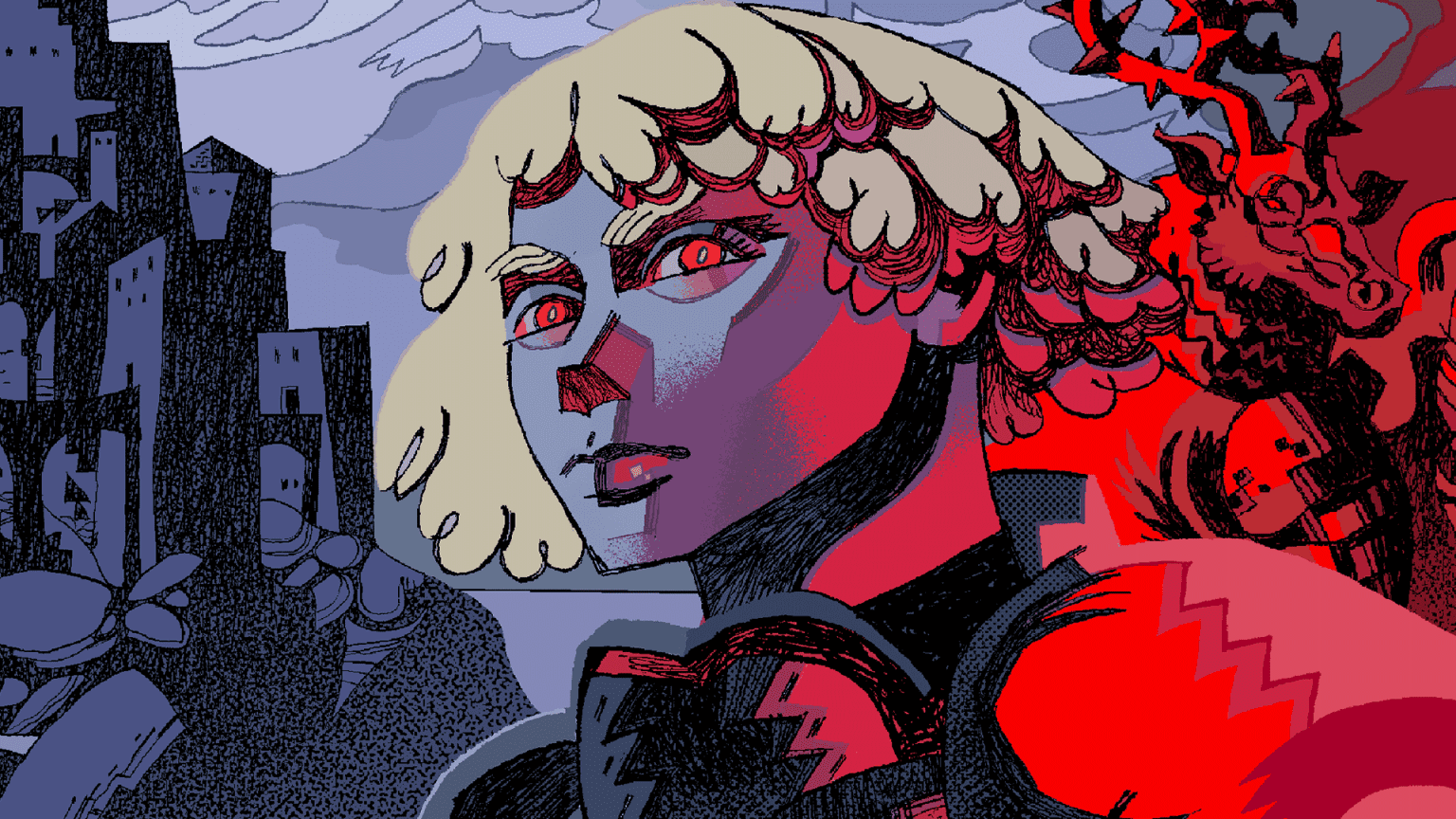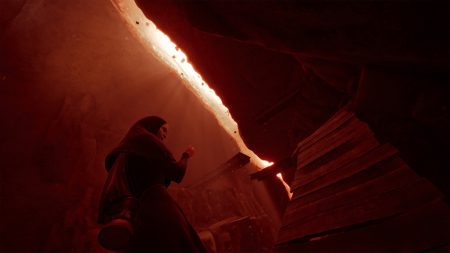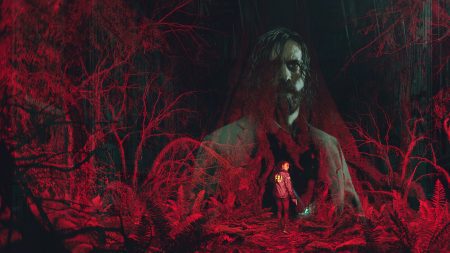Third-person shooters occupied a strange place prior to the sixth generation of game consoles (PlayStation 2, Xbox, and GameCube). Games like 2003’s kill.switch—which pioneered cover-based shooting—and 2005’s Resident Evil 4—which pioneered practically everything else—concretized many of the mechanics we expect from the genre today. In the process, however, the more zany and creative ideas of older shooters have been lost to time.
The Tower on the Borderland, developed by DascuMaru, attempts to find a balance between the modern mechanics of today and the creative fluidity of the genre of yesteryear. Yet this balancing act also makes the game a difficult one to grasp. Equal parts fascinating and frustrating, The Tower on the Borderland endearingly takes advantage of its PlayStation 1 aesthetic—from its simplistic controls to its focus on vertical movement—but isn’t without its warts. Its elements combine to create an experience that, though admirable, feels like an echo of the now classic games from which it draws inspiration.
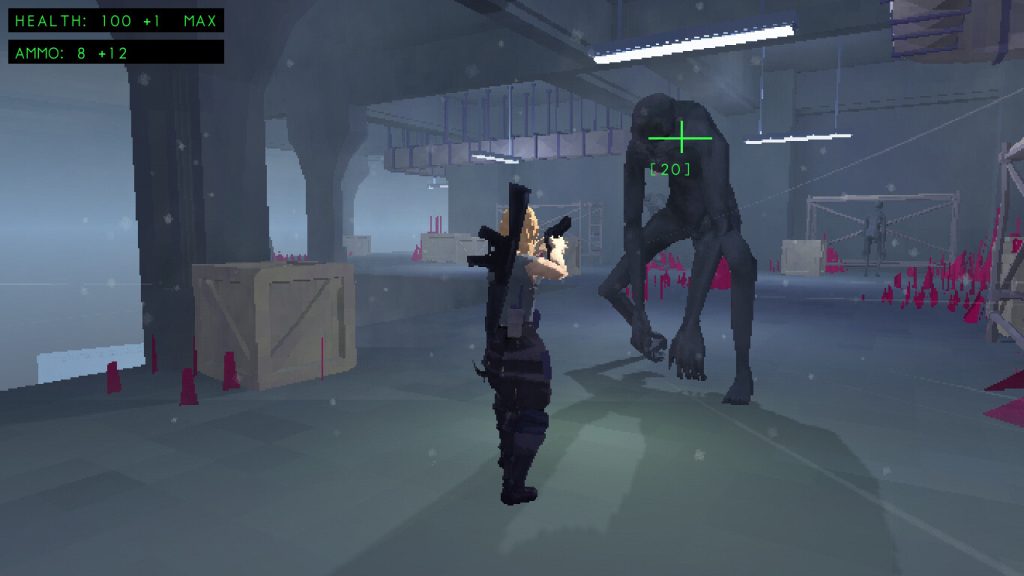
PlayStation 1 Vibes
The Tower on the Borderland leans heavily on its forebears. The game’s Steam page notes Super Metroid and William Hope Hodgeson’s horror novel The House on the Borderland (1908) as key influences. Over on social media, the team at DascuMaru has cited Resident Evil and Metal Gear Solid as additional muses.
After playing the game myself, the inspirations are clear as day. The Tower on the Borderland is an interesting amalgamation of all of the above. From its outset, the game demonstrates a promising marriage of exploration and supernatural horror wrapped in a dark PlayStation 1 aesthetic.
Two characters take center stage: a special ops soldier named Erin and the tower itself. Erin’s knife skills, prominent father issues, and career choices would make her right at home in either Resident Evil or Metal Gear. While adventuring, she reveals the tower’s secrets as she seeks a way out.
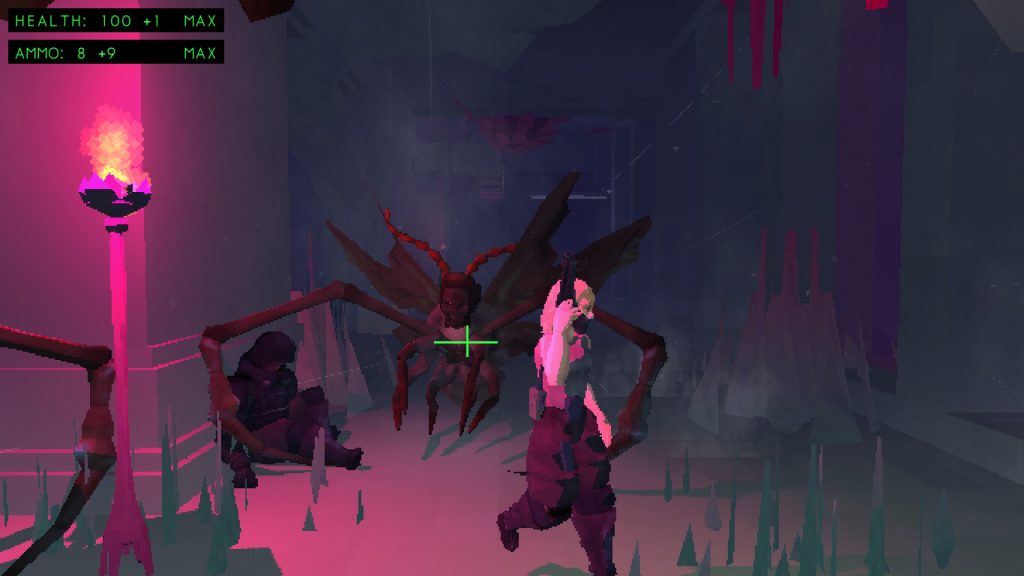
The tower itself creates a haunting ambiance, creating moments of interesting environmental storytelling. Each elevator ride uncovered a new, often surprising element of the tower. Doom and gloom haunt its gothic brutalist structures. Even when alone in an empty room, Erin never feels safe. I was often struck by how the sound of Erin’s footsteps filled the space—and me—with a sense of looming dread.
The Tower on the Borderland’s combat feels like an evolution of old-school third-person shooters like Syphon Filter. Erin spends most of her time fighting insects and ghouls, which vary in size and danger. Though she begins the game with only a knife, an early objective tasks her with finding a handgun. Once you obtain it, resource management becomes essential; fights have to be carefully chosen and planned. Erin’s ammo is only restocked upon dying or reaching a safe point: a supply bin marked by a burning barrel and a radio.
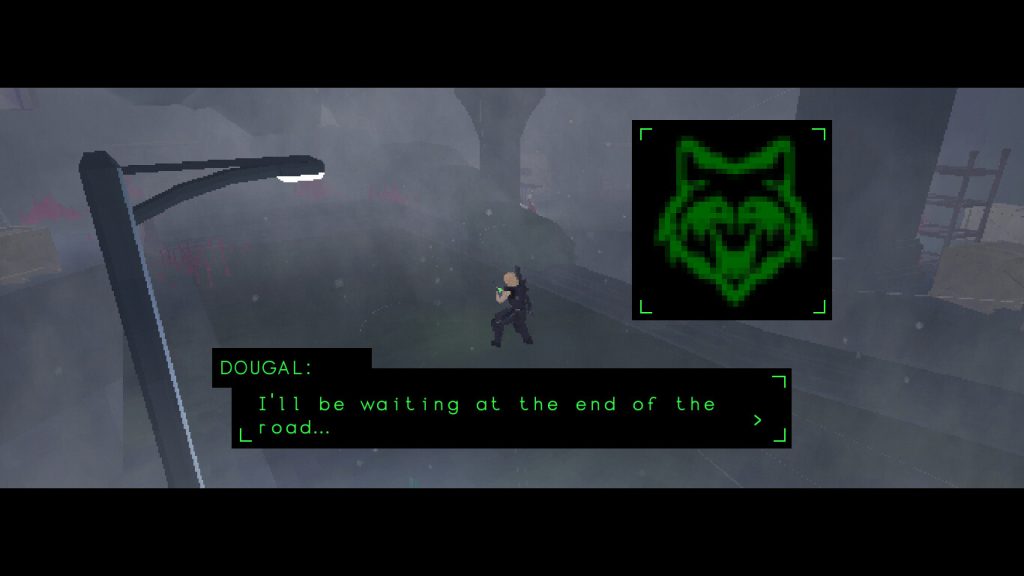
No FOXHOUND
Along the way, Erin will encounter members of her former special ops team. The game’s cast of former squad mates is a highlight, each feeling like they were plucked straight from a Metal Gear Solid entry. While none of these characters get as much screen time as I would have liked, or nearly as much development as they deserve, their appearances and cutscenes provide depth to other characters navigating this strange tower.
Each of these squad members also serves as a two-part boss fight. It is here where The Tower on the Borderland becomes its most experimental. The first part of each boss fight finds Erin’s squad mate wearing their signature animal mask. Each animal foreshadows the person’s tactics during the fight. For instance, the boss wearing a stag mask begins the fight atop a steed, while the squad member wearing a bat mask attacks from a helicopter.
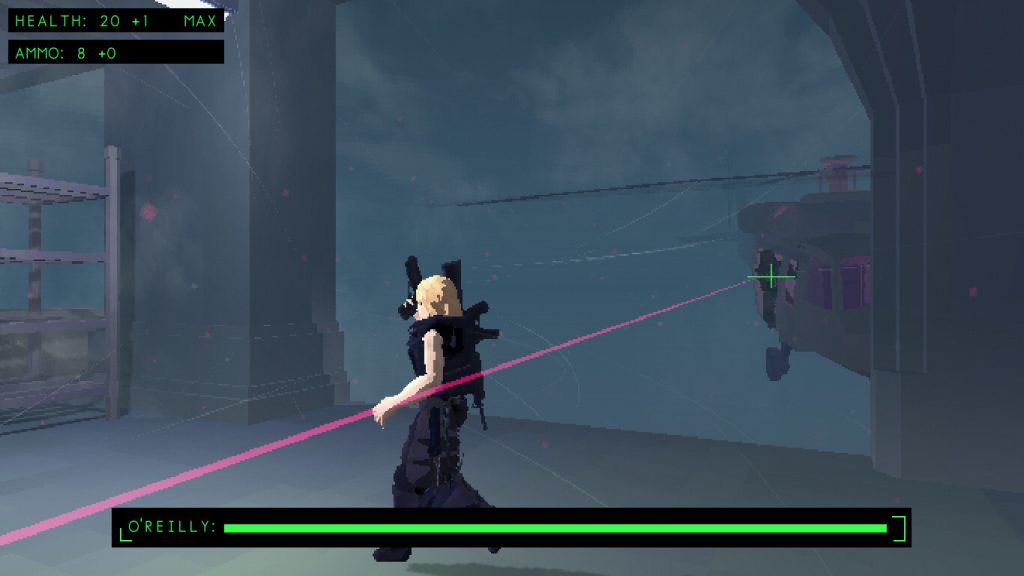
During the second phase of each fight, these bosses transform into monstrous versions of themselves. Their appearances, move-sets, and attack patterns are pretty gimmicky but lead to some of my favorite gameplay experiences in Tower on the Borderland. The conclusion of each boss fight provides dialogue that often challenges Erin to take on her next challenge in the tower.
Look Up / Look Down
Much of my six-hour playthrough of The Tower on the Borderland was spent getting lost in the tower. The game’s map is equal parts helpful and irritating; the tool pulls inspiration from stealth-ops games of the PlayStation 1 era (like Metal Gear Solid or Siphon Filter) and classics like Super Metroid. I never had difficulty finding Erin’s marker, but trying to trace the room connections or plot out where to go next while seeking out secrets (such as the game’s collectible bugs) was difficult.
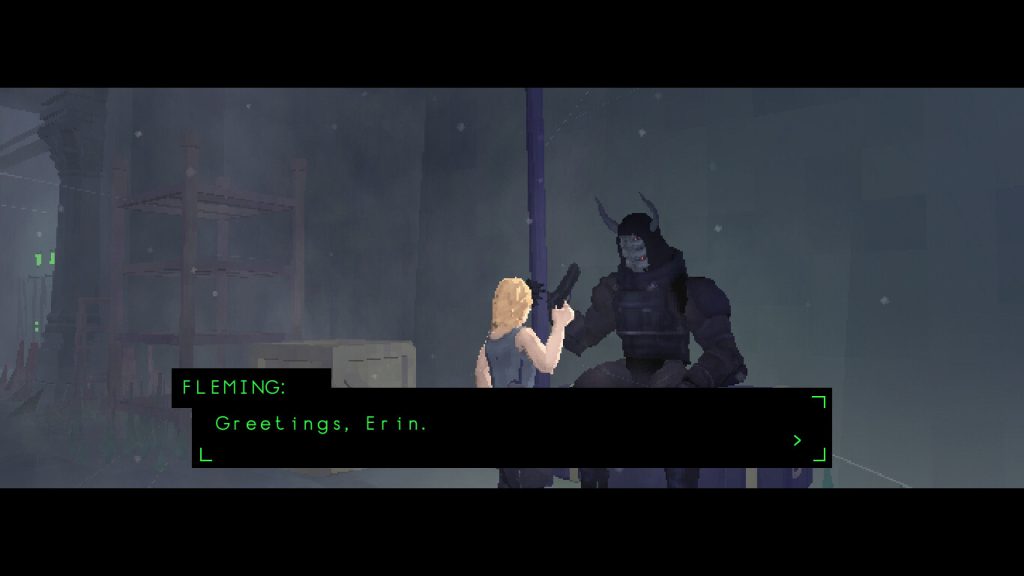
Frustrations aside, the game’s collectibles are well worth the hunt. Gathering the lost souls from certain bugs and giving them to the mysterious figure Fleming rewards the player with the narrative of a wandering stranger. This character’s story mostly plays out like a walking sim but provides additional insight into the world of the Borderland, the tower, and its inhabitants. The Tower on the Borderland sets up a world with promising depth and potential.
It’s a shame, then, that the constant threat of combat is so exhausting. I honestly found it easier to run past enemies than engage them. When I did have to face enemies to open the doors of an elevator or unlock a new upgrade, I left the experience wanting. Larger enemies become bullet sponges that waste resources, while attacks from several enemies hold Erin in place—preventing her from attacking and putting her in positions where death is all but inevitable.
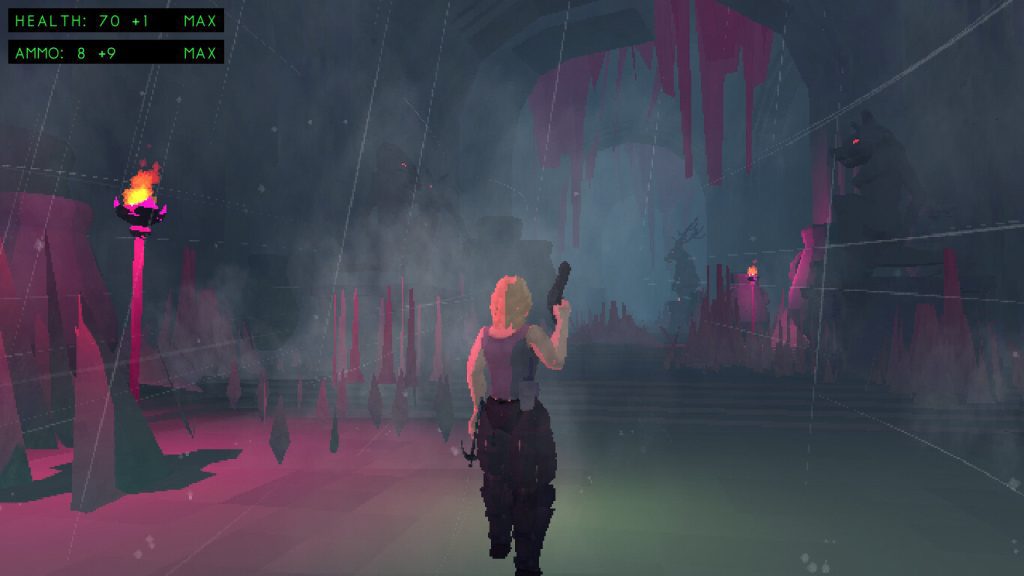
Final Thoughts
Early 3D third-person shooters and old-school PlayStation 1 horror games are seeing a mini-renaissance, as evidenced by experiences like last year’s El Paso, Elsewhere and even this month’s Crow Country. The ’90s aesthetic isn’t just trendy; it’s also leading the way in experimentation.
The Tower on the Borderland is a bold new game in this space—one that is equal parts appealing and vexing. I enjoyed a lot of my brief time with the game, but too often, the experience felt like a rough draft of what comes next. That said, the game has laid the groundwork for something truly special—a potential series that builds upon and honors the legacy of PlayStation 1-era third-person games that many of today’s players grew up on.
I do hope to play as Erin again one day. The world of The Tower on the Borderland is fascinating and rich. It deserves a sequel and encourages wandering beyond the tower gates. Until then, its tower full of creatures, lost souls, and interesting ideas casts a somber shadow over this horrific world.
Score: 6.5/10
The Tower on the Borderland is available now on Steam for $15.99. There’s also a free demo if you’d like to try before you buy.
Disclaimer: A review code was provided by the developer.
Clint is a writer and educator based out of Columbus, OH. You can often find him writing about Middle English poetry, medieval games, or video games. He just finished a PhD in English at the Ohio State University. You can find his academic and public work at clintmorrisonjr.com.


